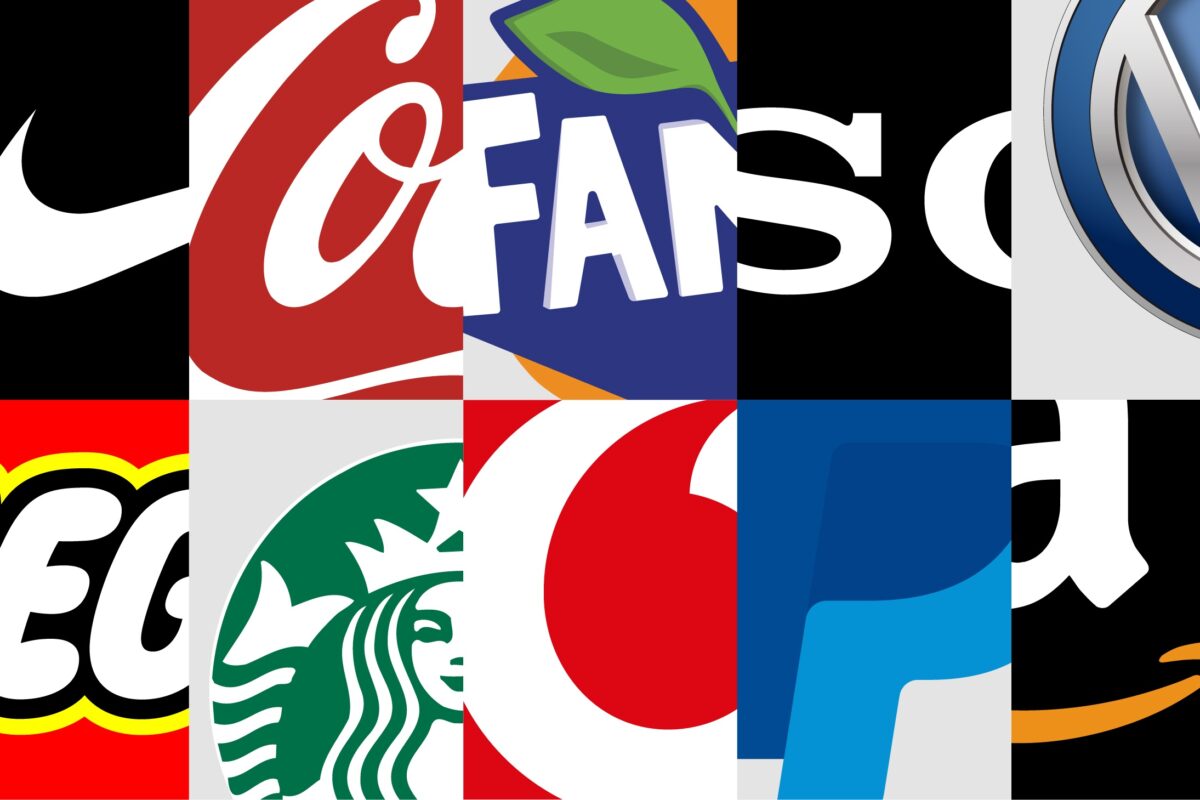
Branding is so popular in boardrooms today that some companies are overdoing it. “If one brand is good,” goes the thinking, “then two must be better.”
Is Nescafe Taster’s Choice really a better or more powerful name than Taster’s Choice?
Category Leader
Years ago, Taster’s Choice overtook Maxim to become the No. 1 freeze-dried coffee in America. One reason was its superior name. Taster’s Choice implied a benefit. The brand name Maxim was meant to allude to parent Maxwell House, the country’s leading coffee brand at the time.
The seldom-told story of the Taster’s Choice name is that Nestle management in Switzerland wanted to call the product Nescafe Gold to take advantage of Nescafe, the world’s largest-selling instant coffee. U.S. management, on the other hand, insisted on the Taster’s Choice name and eventually won the internal as well as the external battle.
2003 Name Change
Well, the folks in Vevey finally got their way. Since 2003 Taster’s Choice is now officially Nescafe Taster’s Choice.
It’s a trend. Glide is now Crest Glide. Cottonelle is now Kleenex Cottonelle. SpinBrush is now Crest SpinBrush. And so it goes.
Consumers, however, will usually use one name instead of two. Nobody in their right mind would write Nescafe Taster’s Choice on a shopping list. Or Crest Glide. Or Kleenex Cottonelle. It’s just Taster’s Choice, Glide and Cottonelle.
Furthermore, the most powerful brands are those that stand on their own, without corporate endorsements or master-brand hocus-pocus. If Nestle bought Red Bull (an acquisition they should definitely consider), should the brand be re-badged as Nestle Red Bull? I think not.
Single Words Are Stronger
Strong brands are invariably a single word or concept. Absolut, Barbie, BlackBerry, Duracell, Gatorade, Haagen-Daz, Jell-O, Listerine, Mercedes-Benz, Olive Garden, Q-tips, Ritz-Carlton, Rolex, Tylenol, Victoria’s Secret.
Adding a corporate endorsement to these (and many other single-concept brands) would weaken them, not strengthen them. “DaimlerChrysler’s Mercedes-Benz” was not a concept that was going to attract any additional customers to the Mercedes brand.
One reason new products are often double branded is research. Few mega corporations would consider launching a major new product without extensive consumer research, which often involves brand names.
Take Crest Whitestrips, for example. Even though the product has little to do with toothpaste, Procter & Gamble still stuck its toothpaste name on the brand. Why? Research suggested that consumers would have more confidence in the product if it had the Crest name on the package than if it had a totally new name. (To be honest, in Cincinnati Crest is not a toothpaste brand, it’s an oral-care brand.)
Skewed Research
Research can lead a company astray because consumers prefer the known to the unknown.
Before Dietrich Mateschitz launched Red Bull, he hired a market-research firm to test the concept. “People didn’t believe the taste, the logo, the brand name,” he said. “I’d never before experienced such a disaster.”
But he launched it anyway. And today Red Bull does $3.4 billion in worldwide sales.
You’ll find very few Red Bulls in the portfolios of Procter & Gamble, Unilever, Heinz, Kellogg and General Mills. A shocking name (Red Bull) combined with a new category name (energy drink) is just not going to test very well.
Nowhere is double branding more rampant than in the automobile industry. Yet some of the most powerful automotive brands don’t use double branding at all. Lexus, BMW, Mercedes-Benz, Infiniti and Volvo, for example, just use letters and numbers to differentiate their models. Some of their numbers actually make sense, as in the 3 series, 5 series and 7 series from BMW.
Acura Brand
One double brander (Acura) found that its Legend model had higher name recognition than the master brand. So for the 1996 model year, the Legend became the TL. In five years, Acura’s name recognition went up 25%. Compared to 1996, Acura sales last year were up 86%.
Compare Acura with the double-brander Chevrolet. In the same time period, Chevrolet sales were down 5%.
Or rather Astro, Avalanche, Aveo, Blazer, Cavalier, Classic, Cobalt, Colorado, Corvette, Equinox, Express/G, HHR, Impala, Malibu, Monte Carlo, Silverado, SSR, Suburban, Tahoe, TrailBlazer, Uplander and Venture sales were down 5%.
The Blake Project Can Help: The Brand Positioning Workshop
Branding Strategy Insider is a service of The Blake Project: A strategic brand consultancy specializing in Brand Research, Brand Strategy, Brand Licensing and Brand Education





6 comments
Mayank Dhingra
September 13, 2009 at 5:24 am
Great post Al. I agree with you on the overuse of double branding and the fact that customers continue to use just one brand name in case of double branding due to acquisition or merger.
Web companies seem more intelligent in this regard as they don’t even try to re-brand the companies they acquire. Delicious is still delicious, Youtube is still Youtube and so on.
These are normal cases but what do you think is the best way if a big company acquires another small one whose name got tarnished say due to a scandal? Does double branding help in re-building lost credibility? Or is it a good idea to change the name of acquired company all together?
PS: You can email me your reply too
Dennis Van Staalduinen
September 14, 2009 at 9:28 am
Thought provoking post as always from the king of the “22 Rules” school, It’s hard to argue with the point that there are too many examples of clumsy brand extensions designed to build executive egos rather than help customers make meaningful choices, so bravo for continuing to hammer at dumb branding.
But a couple of quibbles: 1) you focus on consumer products – mostly packaged goods – and implicitly extend the “rules” to other brand categories; and 2) you quickly dismiss the entire range of brand architecture options as “Double Branding” as if brand strategy began with Proctor & Gamble c. 1960 and ended there.
“Mono-branding” is one powerful path to success in some markets, but look around: smart branders have found many, many others. And savvy consumers are “reading” the brandscape in much more sophisticated ways that go beyond the package on the shelf.
Even Proctor & Gamble c. 2009 gets this, as your Whitestrips example shows. So yes, I am more likely to buy “Crest Whitestrips” than I am just “Whitestrips”, and P&G saved a pile of marketing dollars on not building a new brand from scratch.
The problem is, this logic – and the brand -often get stretched too far, as in one of my favourite examples – Colgate Shaving Cream (blech!). Dumb branding in other words. And that’s where our fight as intelligent brand advisors needs to focus.
Brian Chiger
September 14, 2009 at 12:50 pm
Great points! You are absolutely correct that consumers tend to retain one name when remembering a brand. The question, is whether that second name helps or hinders (or has no effect) on that brand’s recognition. Is Nescafe Taster’s Choice better than just Taster’s Choice or Nescafe? Does it have no effect? Or is it actually detrimental to recall?
Usually, dual branding is performed to bolster the reputation of the sub-brand. It’s much cheaper to launch a sub-brand than a new master brand.
While I find the use fairly innocuous, though unnecessary for most low consideration items like CPG personal care items like WhiteStrips carry a greater degree of risk and, I believe, are helped by the inclusion of the trusted brand name.
The case, however, is very different for automobiles. Chevrolet caters to a far broader audience than a luxury automaker like Mercedes-Benz or BMW. Those automakers are selling cars to a driver with similar needs. Chevrolet buyers are a much more diverse. Thus, Chevrolet’s lineup features much more diverse vehicles. I’d hate to have to sort through the Chevy catalog to remember that the RX2700 is a sporty hatchback while the CT450 is a family minivan. The use of double-branding here serves two purposes 1) to differentiate the different car models and 2) to reassure buyers that even though they’re buying an Impala, they’ll still be able to get a warranty and have their car fixed at a mechanic.
While you are correct that double-branding can dilute brand recognition, I’d hardly attribute GM’s failures to lack of strong brand recognition.
Caitlin
September 14, 2009 at 1:58 pm
Very nice post. Good points you make on how single words are stronger but not always a guarantee (Red Bull).
My only disagreement was in the case of Kleenex Cottonelle. I would never call it Cottenelle. Kleenex is by FAR the master brand. No one calls them ’tissues’ it is a Kleenex, no matter who makes it. That is branding at its highest form. Just like people order ‘a coke’ rather than an ‘rc cola’ or ‘pepsi’ Coke is that brown soda and Kleenex is the nose wipe, they define the product.
Brooks Perry
September 17, 2009 at 11:14 am
Very good post and comments. I think it all comes down to common sense. Crest Whitestrips makes sense because Crest has become synonymous with clean-mouths and gives Whitestrips some added credibility. Double branding that forces consumers to second guess the product, just from the name, is going to hurt getting new products off the ground.
Matthew Excitemental
June 3, 2014 at 5:58 am
very good article, double branding can work in some cases (automotive and mobile industries are a prime example) but the majority of cases people only remember teh ‘brand’ name.
Its a great story about Red Bull starting off as a diaster of a brand name.. there are only a handful of stronger recognised brand names than Red Bull now
Comments are closed.